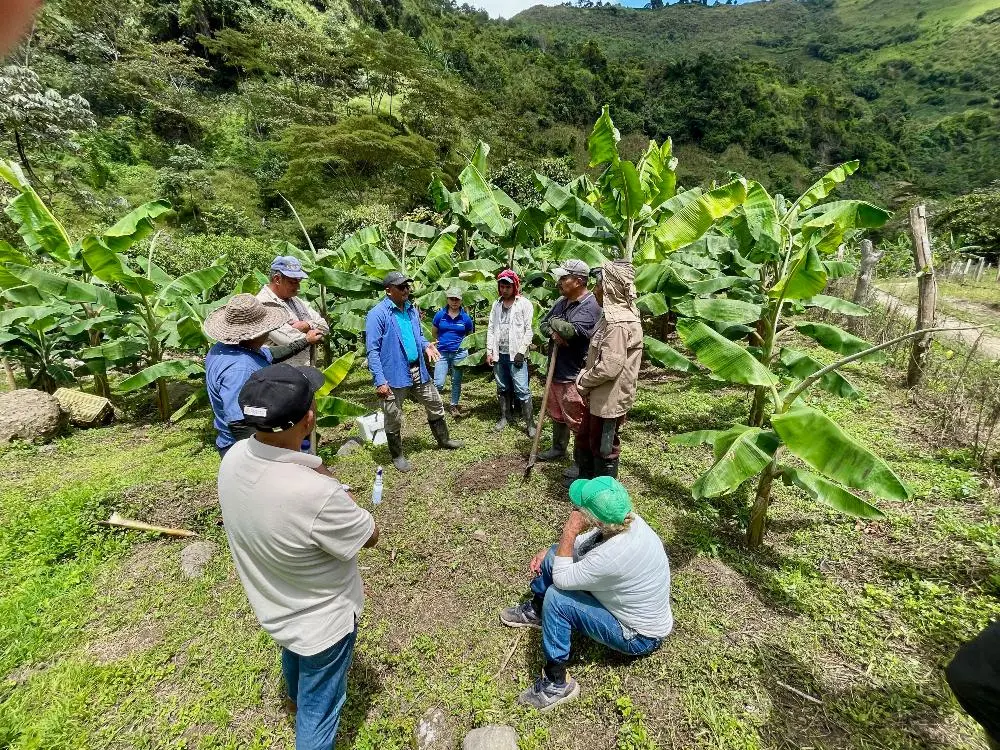La Plata, Huila. July 24, 2025. In the productive landscapes of the municipality of La Plata - Huila, where the Sanjuanero rhythm, the land, and sweat write the story of its people, innovation has arrived to revolutionize plantain cultivation. It is no longer just about planting and waiting, but about transforming: technologies that speak the language of crops, knowledge that deciphers the secrets of the soil, and sustainable practices that reconcile people with the land. This is the new heartbeat of the countryside, a pulse that combines tradition and future.
In this context of change, the Colombian Agricultural Research Corporation – AGROSAVIA, with the support of the Ministry of Agriculture and Rural Development, has embarked on a vital mission in the heart of Huila. Under the motto Food Security, the Plan for the Implementation of Technological Solutions in Plantain with a Food Security Focus, aimed at producers and indigenous communities in the department of Huila, is underway. This initiative doesn’t just plant plantains—it plants hope. With an innovative approach, it is revolutionizing the production of quality seeds, shortening production cycles, and multiplying opportunities for the Asociación de Plataneros El Progreso.
Eliseo Polanco Diaz, master researcher and project leader, explains: “Through the implementation of an innovative technique for the production and multiplication of plantain seeds, structured into three key components, we aim to achieve the following: Intensive multiplication nursery: A system designed for large-scale production of high-quality seeds and plant material. Using techniques such as high-density planting and double-row systems, available resources are optimized. After five months, the pseudostem is cut at ground level, eliminating apical dominance (the central growth point). This process stimulates the emergence of multiple suckers (shoots), significantly increasing the availability of plant material.
Multiplication tunnels: These are specialized structures that accelerate the propagation of plantain seedlings using corms (underground stems) weighing between 700–1000 g. Following the removal of apical dominance to inhibit central growth and stimulate lateral sprouting, this technique ensures a high multiplication rate, enabling a sustainable and scalable supply of quality seeds. An irrigation system was installed in these structures to ensure efficient use of water resources during critical periods.
The nursery: This is the final stage of the process, where seedlings undergo a period of acclimatization and strengthening under controlled conditions. During this phase, physiological and morphological parameters are optimized, ensuring that the plant material reaches the size, vigor, and resistance necessary to guarantee its survival and optimal development during field transplantation.
This way, we obtain the high-quality plant material or seed required for planting and commercialization.”
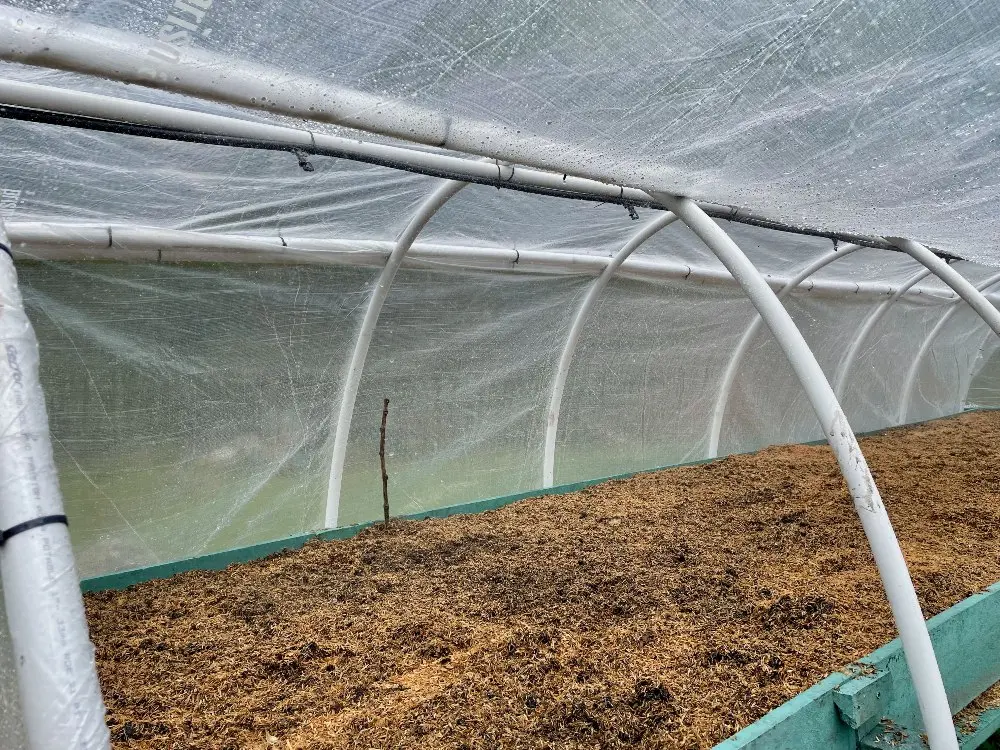
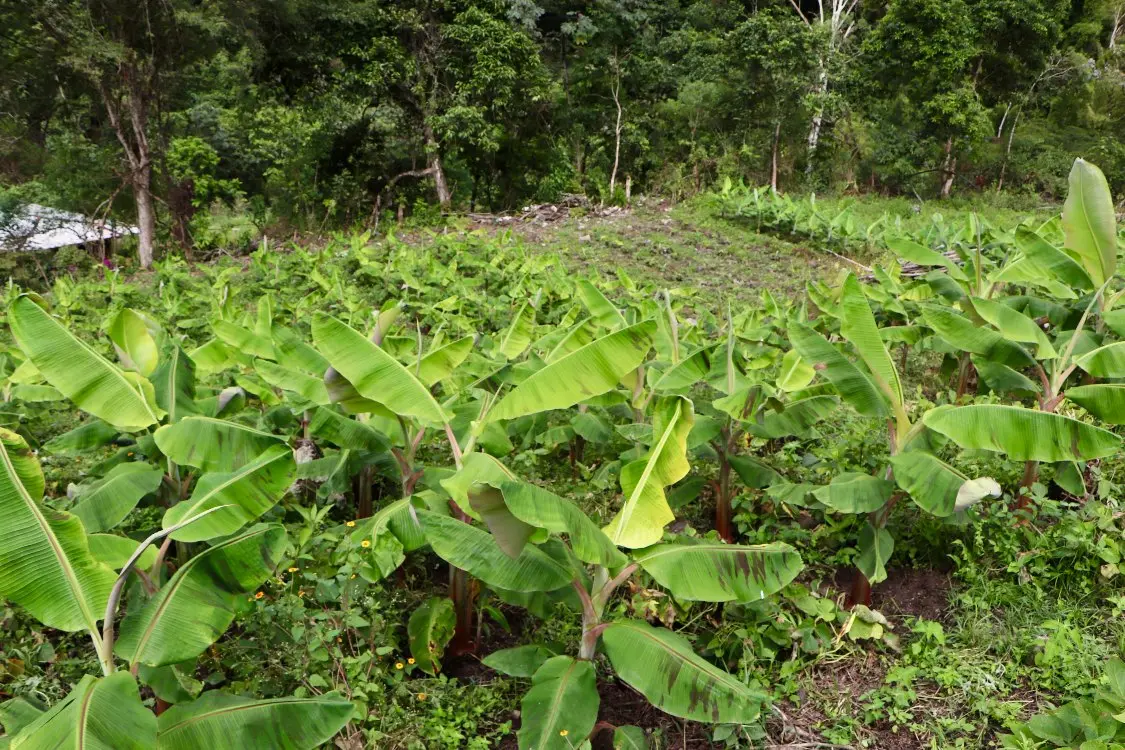
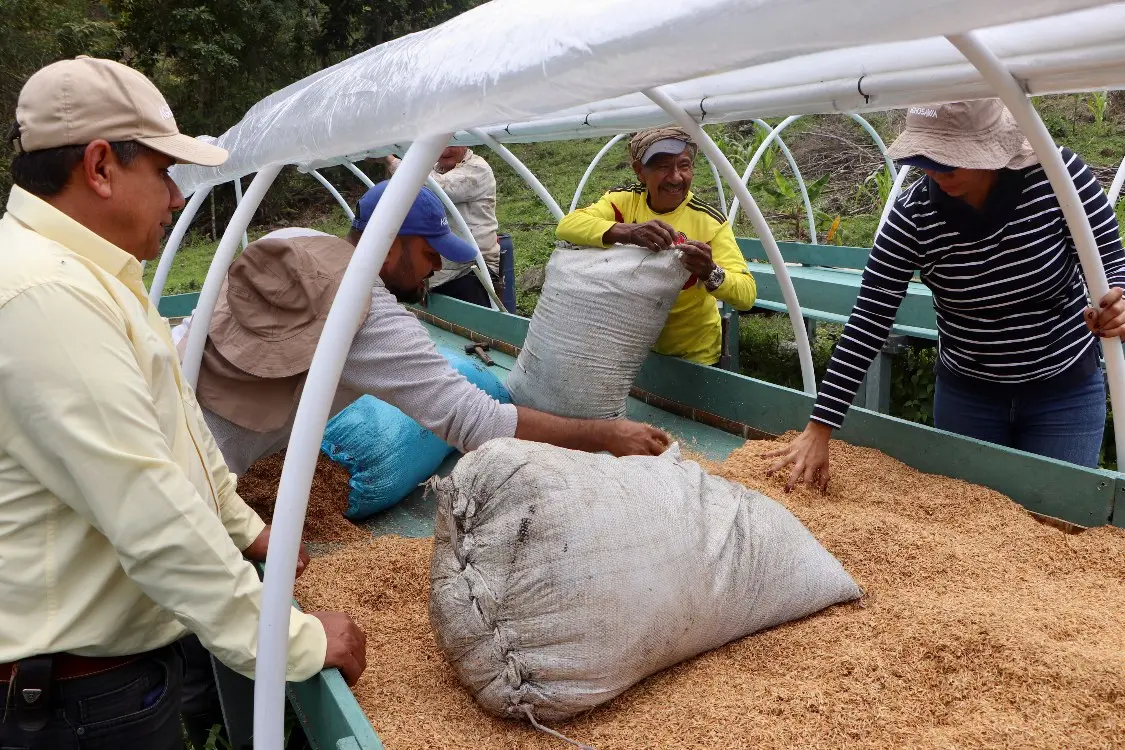
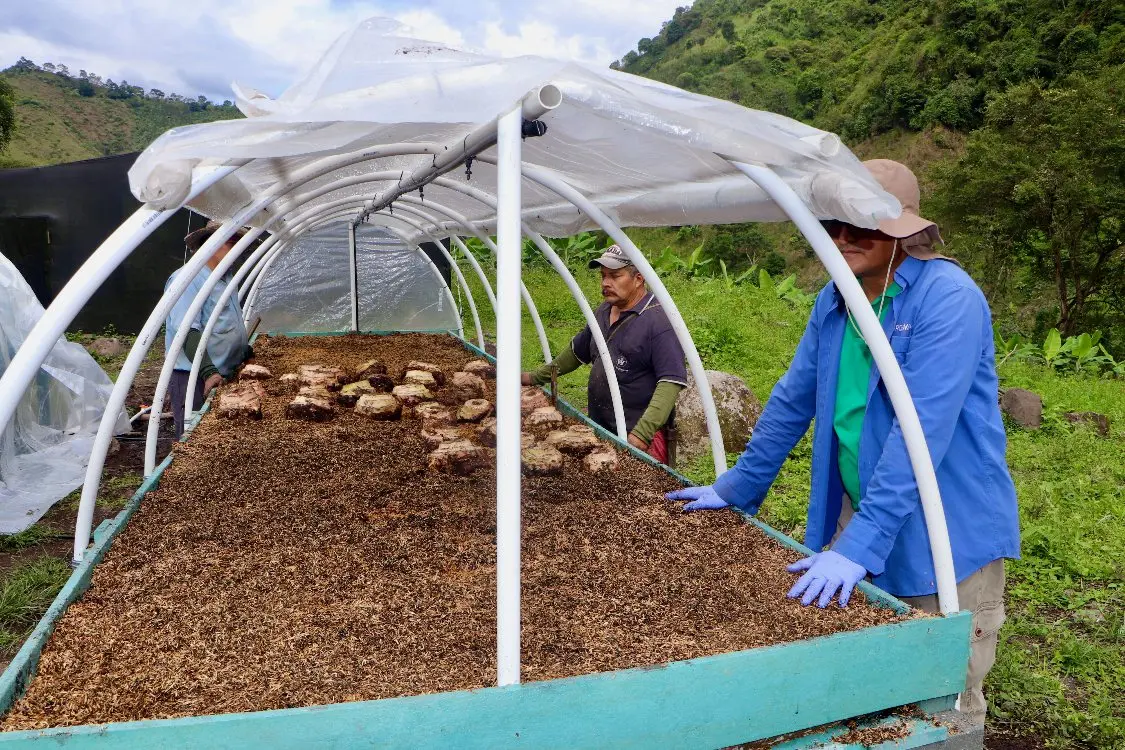
But there’s more: the plantain production system is just the beginning. The El Progreso association is now planting a diversity of crops among the rows. Beans and corn grow alongside the main crops, enriching not only the soil but also the meals and health of their families. A key step toward food sovereignty that is already bearing fruit.
Here, science is placed at the service of the community: an accelerated seed production system is changing the rules of the game. There will no longer be long waits or uncertainty; now, each seed carries the promise of secure food and economic autonomy. But the project goes further: it is leaving a mark. Training that empowers, infrastructure that endures, and most importantly, a legacy of food sovereignty so that these families not only eat today, but also sow their own tomorrow.
Soon, these plantain farmers will not only harvest fruit but also high-quality seeds, ready to be marketed and shared with other farmers in the region. In this way, the cycle closes and reinvents itself: what is born in La Plata does not stay there—it becomes a living legacy for all of Huila.
But its magic doesn’t end there. This green gold weaves networks of prosperity: in local markets, it is valued as a bartering currency; in ancestral kitchens, it transforms into recipes that tell stories; and in depleted soils, it emerges as a resilient crop. However, its true potential has yet to be fully realized. Innovations such as drought-resistant varieties or artisanal processing could catapult it from a staple food to a symbol of food sovereignty.
For AGROSAVIA, this fruit embodies the essence of its mission: to innovate is not just about technology—it’s about sowing solutions to face the challenges of the 21st century: looming hunger, a rebellious climate, and soils crying for mercy. Every improved seed, every sustainable technique adopted, is a step toward a future where the countryside doesn’t just recover—it flourishes with dignity.
- More information here:
- José Dario Ule Rodriguez
- Communications, Identity and Corporate Relations Professional
- Office Florencia
- Communications, Identity and Corporate Relations Advisory Office
- jule@agrosavia.co
- AGROSAVIA



